In Texas, the summer of 2022 looks to be shaping up as the hottest in history. istoric drought, rampant wildfires, and a stunted insect population–including monarch butterflies.
Front yard struck by high temperatures and a lack of rain? Grass looking a little dead? Perhaps you should consider solarization, an easy, chemical-free method that can convert water-guzzling grass to a glorious butterfly garden.
Solarization offers a low-cost, low tech, low impact, chemical-free approach to weed removal and bed prep. Plus, why not take advantage of the free solar power that shines on our part of the world an average 300 days a year?
The idea of solarizing the soil or killing turf in such a way is to smother, almost pasteurize the soil, killing most weeds and undesirable live organisms by raising the temperature and “cooking” the earth–much like a compost pile.
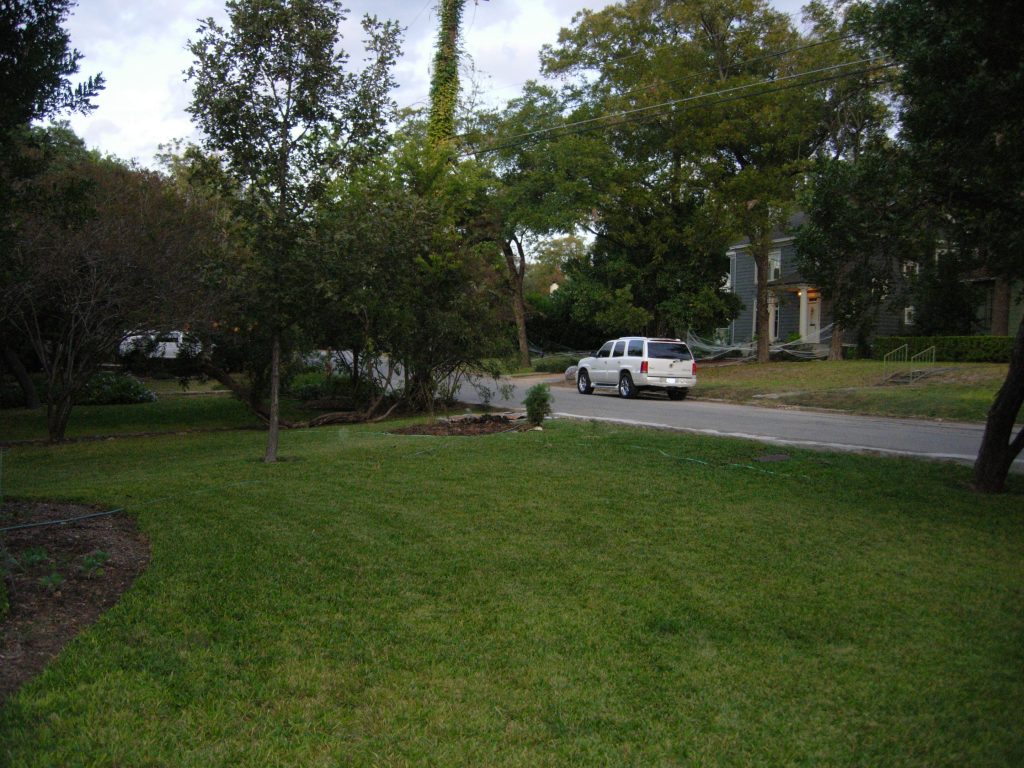
St. Augustine ruled for years at my Alamo Heights home in San Antonio, TX 78209
Piling mulch on top of layers of newsprint or cardboard ensures darkness, making photosynthesis impossible and preventing seeds from sprouting. It also insulates the ground and boosts the temperature–up to 140 degrees, depending on the time of year you do it.
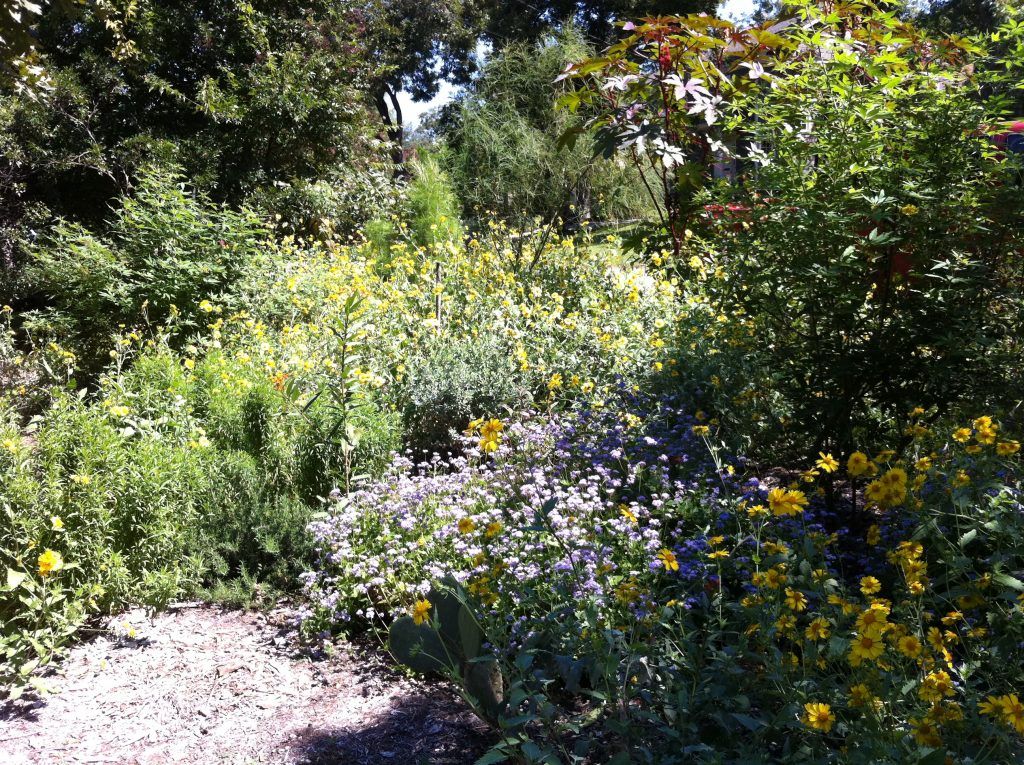
Former St. Augustine lawn, two years later, a glorious butterfly garden, San Antonio, TX 78209
Solarizing in the coming hot summer days makes for a pressure cooker, killing pathogens, nematodes, weed seeds and seedlings. It also speeds the breakdown of organic material, resulting in more soluble nutrients for future plants. The process can take as little as three – six weeks, which is why summer is an excellent time to do it. Your beds will be ready for an early fall planting, when the sun backs off a bit.
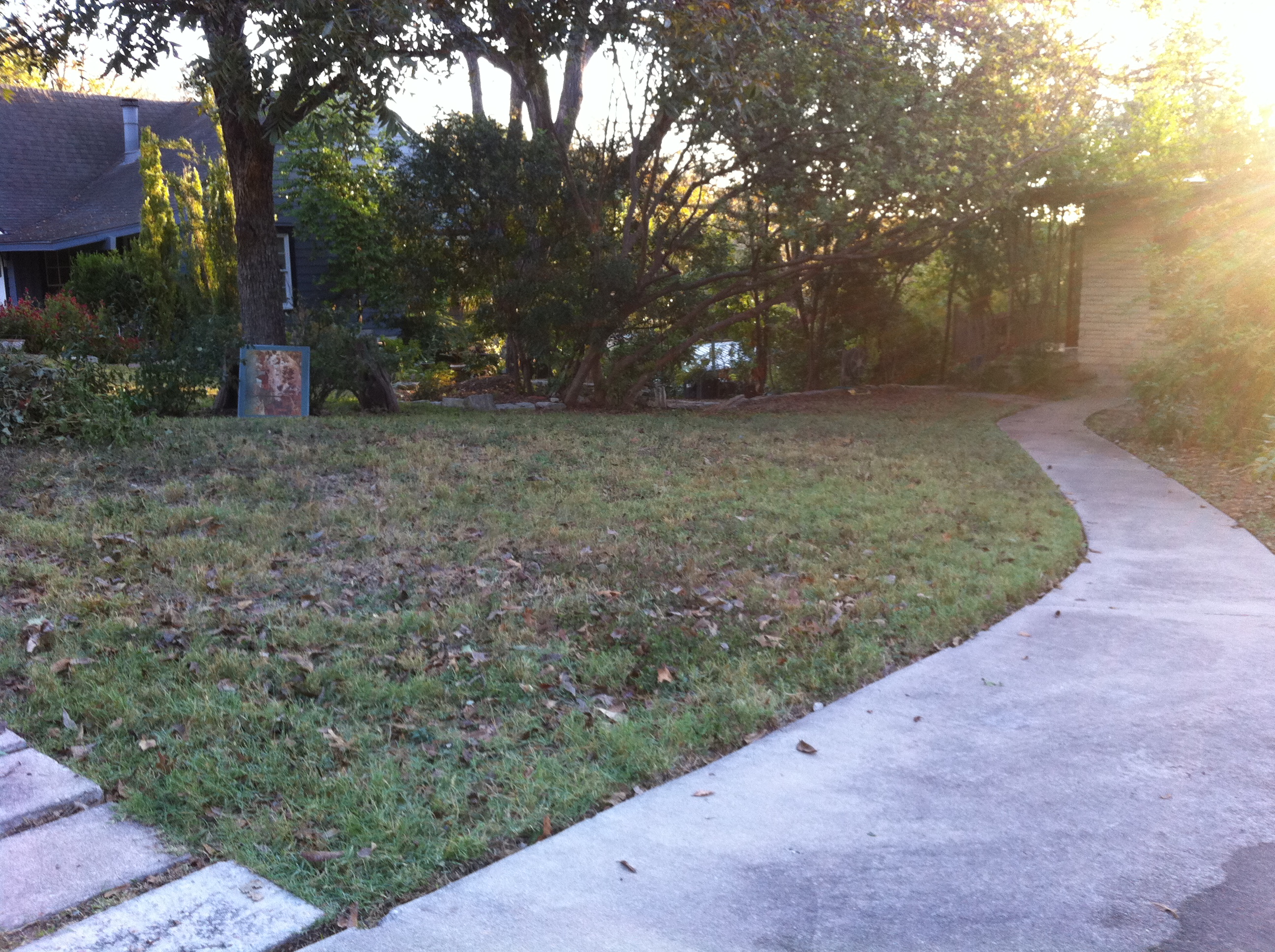
FROM THIS: Bermuda grass front yard in Austin, Texas, November 2010
I have personally tapped solarization to conduct “turf to bed conversions” several times in recent years. An expanse of St. Augustine in Alamo Heights, Texas, morphed into a vibrant butterfly garden within two years. A Bermuda grass stricken plot in front of an Austin apartment became another pollinator haven, in just six months.
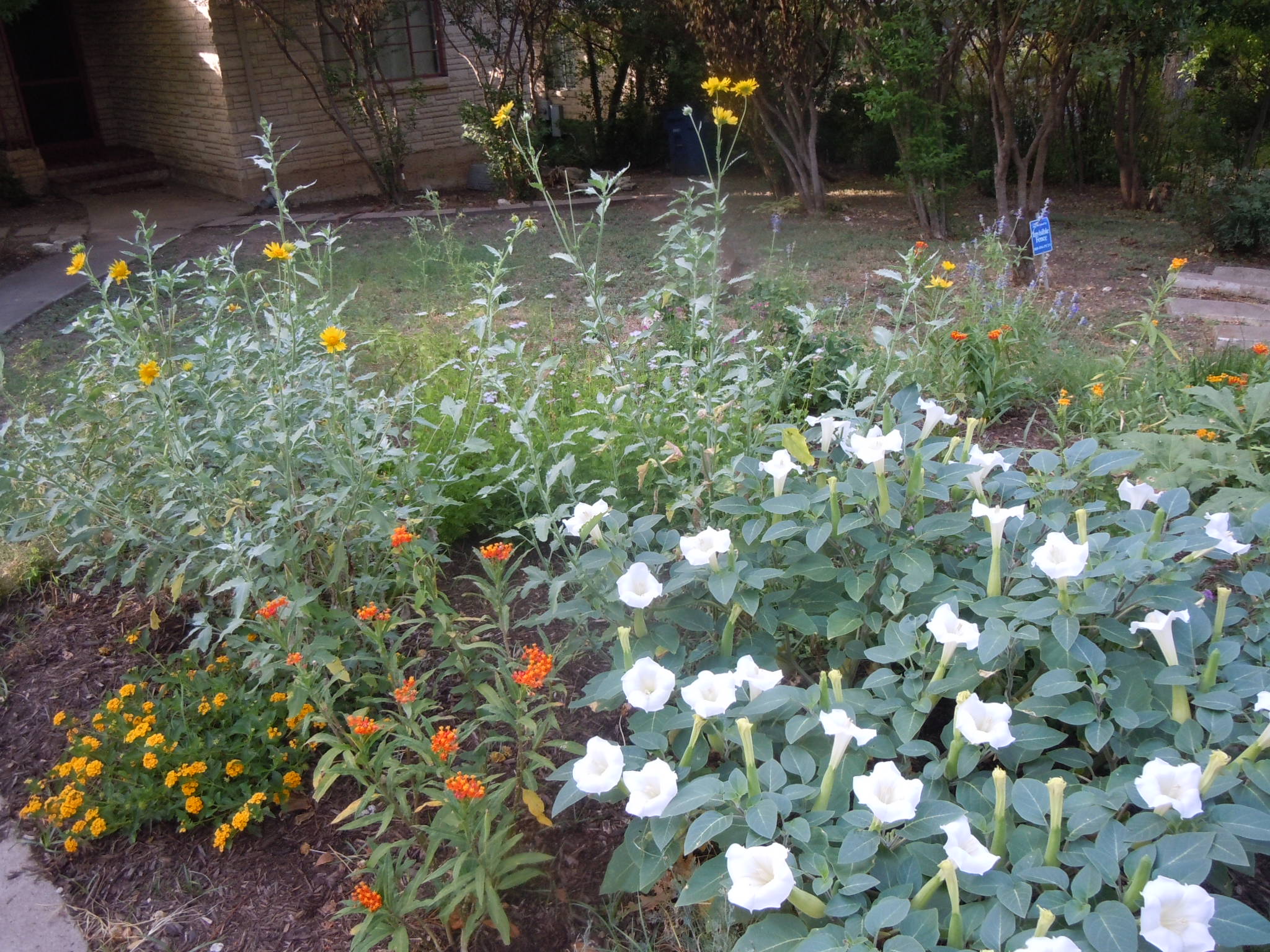
To THIS in just six months. Austin, Texas
Just this week, a small team of future pollinator gardeners tackled a new project in downtown San Antonio as part of our city’s Tricentennial 300for300 Pollinator Habitat Challenge.
The community gardening initiative challenges the community to plant 300 new pollinator gardens for San Antonio’s 300th birthday–30 in each of our ten city council districts.
Our friends at Reata Real Estate and the Rivard Report decided that the neglected Bermuda grass plot behind their future office near San Antonio’s Sunset Station was ripe for a reboot and would make a fantastic pollinator garden. With its high visibility in the downtown area, proximity to the train station and the Alamodome, excellent favorable sun exposure and access to a nearby water spigot, the plot is ideally suited to draw birds, bees and butterflies. We decided to assist in the transformation with a lesson in solarization.
[/fusion_text][/fusion_builder_column][/fusion_builder_row][/fusion_builder_container]
First we hunted down enough cardboard to cover the 300-square-foot space. A used office furniture outlet is a favorite cardboard trove in my neighborhood. Bicycle shops are also good prospects for large samples. Regular cardboard boxes are fine, too, it just takes more work. When disassembling the boxes, be sure to remove all traces of plastic packaging tape. It’s tedious, yes, but leaving it on will dog you later, when you stab your shovel into the soil and hit the plastic snag. When you pull it, it disrupts your garden, making a zip line as it rips across the bed.
We used about 70 bags of mulch for our project, which resulted in a five-inch “blanket” atop the turf. Luckily, a thunderstorm moved in just as we finished and took care of watering for us.
Now, we wait. While the soil cooks this summer, we’ll plan the plantings. In September, we’ll plug in our chosen species–at least six different native species, three host and three nectar plants, as per the 300for300 guidelines. We suspect our new pollinator habitat will be putting out late season blooms just as migrating monarch butterflies move through the area on their southbound migration this fall. Check back here for updates.
Click here to learn about San Antonio’s 300for300 Pollinator Habitat Challenge.
Solarization How-To
1. Thoroughly water (but don’t soak) the area you’re planning to convert from grass or weeds to butterfly beds.
2. Locate cardboard, the larger pieces the better, and lay atop the area to be solarized. Be sure to remove any plastic packing tape from the cardboard boxes as they create a hazard later when you stab your shovel into the ground. If no cardboard is available, substitute newsprint destined for the recycling heap. Six – 10 layers of newspaper will be needed to cover the well-watered turf. NOTE: Many solarization directions call for black plastic to turn up the heat on the soil. You can use plastic, but then you will have to remove it later. And when you take it out, it disrupts the soil. As a lazy gardener, I prefer materials that will simply decompose.
3. Water down the cardboard/newsprint so it doesn’t argue with the breeze and will stay in its assigned place.
4. Cover cardboard with four-six inches of mulch I prefer Native Texas Hardwood mulch, but you can use any color or type.
5. Water again thoroughly and wait a few weeks. You can also plug in transplants immediately, by carving a hole into the cardboard. Just be sure to water thrououghly.
Related posts:
- 300for300 Pollinator Habitat Challenge
- Mostly native butterfly garden outperforms lawn every time
- How to plan and plant a successful pollinator garden
- Tropical milkweed: to plant it or not, it’s not a simple question
- Late season monarch butterflies create gardening quandary
- Pledge to plant a pollinator garden in San Antonio
Like what you’re reading? Follow butterfly and native plant news at the Texas Butterfly Ranch, like us on Facebook, or follow us on Twitter, @monikam.

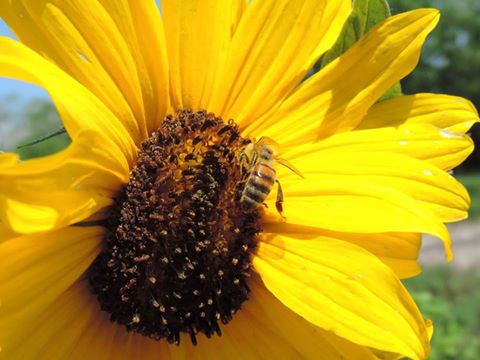
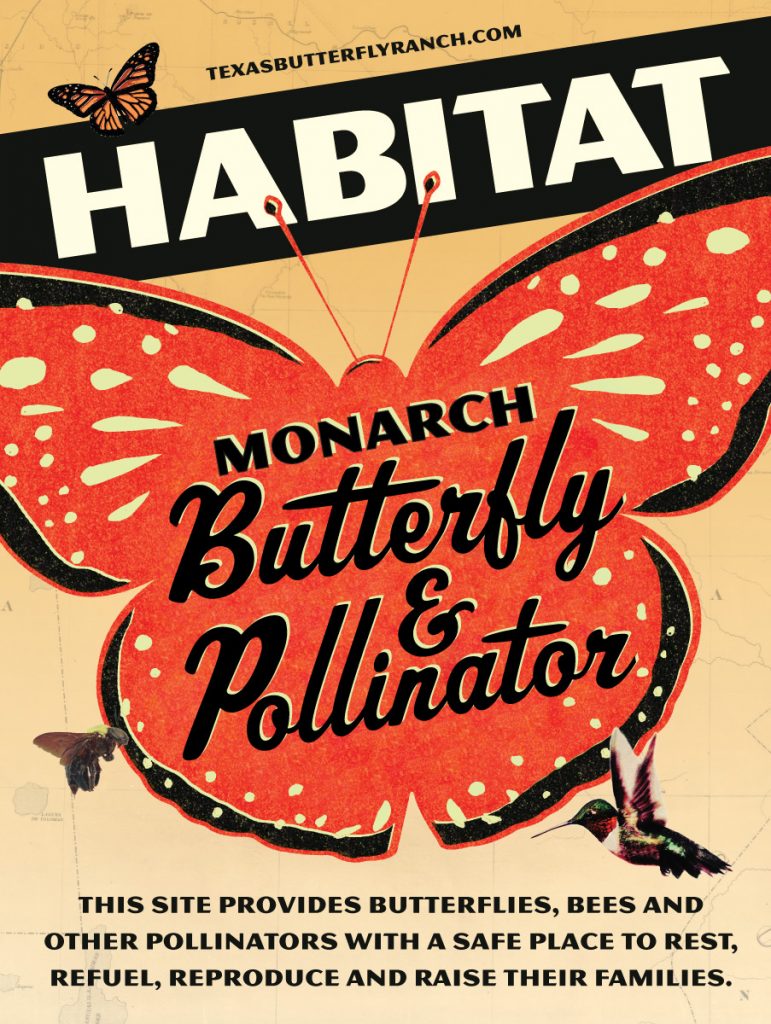
Leave A Comment